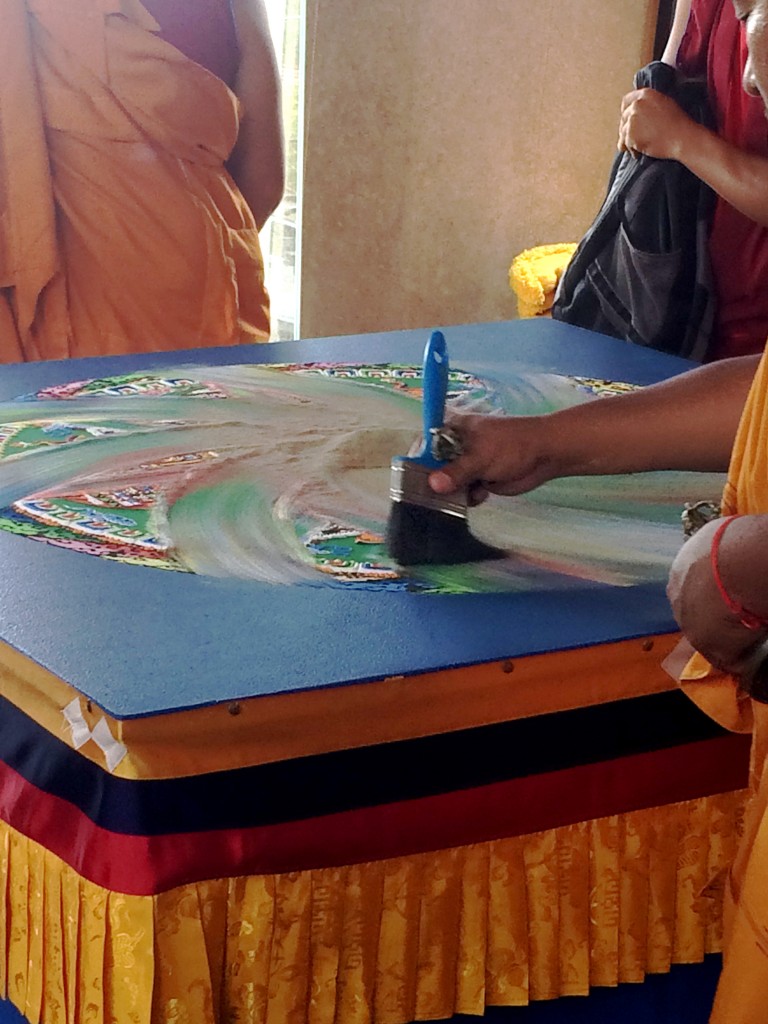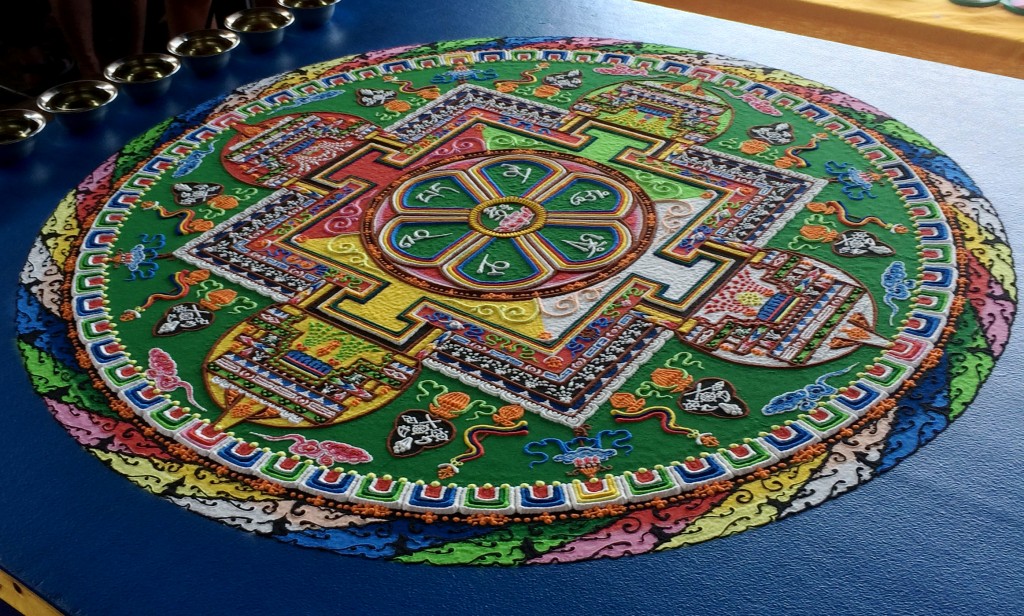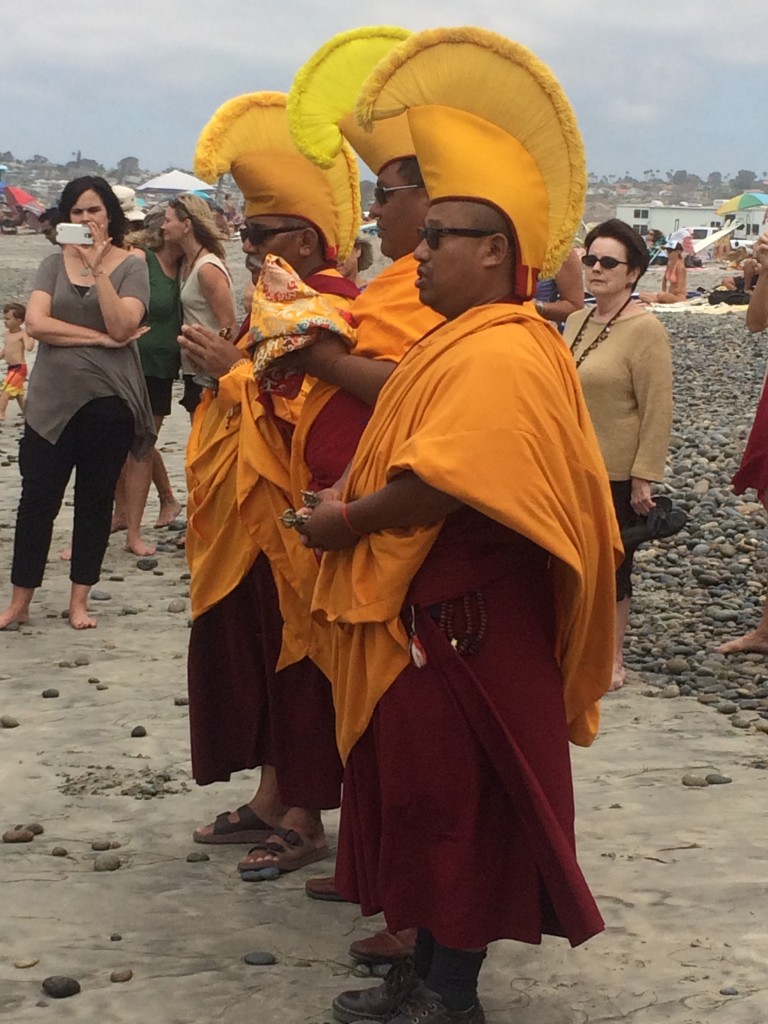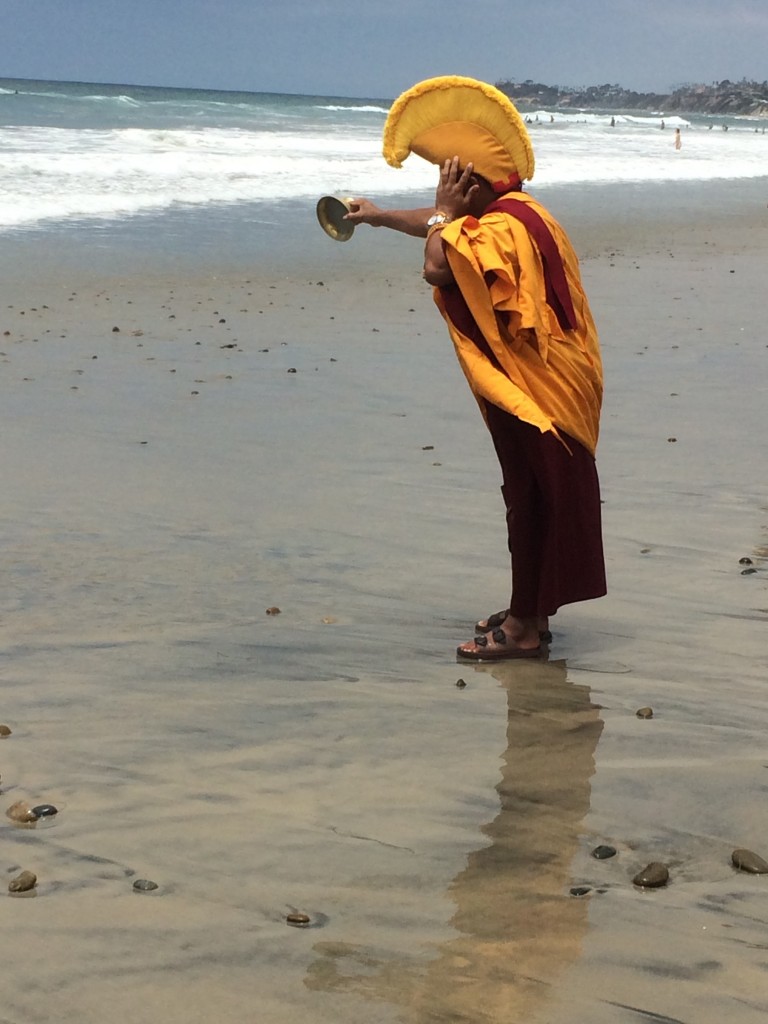Why? Is it because they really are reincarnated? Or maybe, we are too and therefore, that sense of familiarity goes both ways. The only difference is—is that His Holiness, the 14th Dalai Lama hasn’t recognized anyone outside of the monastery as reincarnations of highly evolved human beings. Let alone females. I’m not complaining. Just stating the facts. Well…maybe just a little.
So much has been written about the Tibetans since their auspicious flight (auspicious because H.H. dreamt about it and succeeded in extricating valuable cultural Tibetan artifacts and other holy teachers) from an inevitable, hostile and violent Red China takeover. Unless you crawled out from under a dry rock in the Bedouin desert and practice seventh century philosophies with camels and goats as company (wait, I guess Buddhism began in the sixth century, sooo…why is it more evolved?), we all know who the Dalai Lama is and how his life of compassion and forgiveness is an exemplary living testament to such seemingly unattainable realities for most humans. I mean, he has on several occasions ON RECORD, said he forgives Mao Tse-Tung and the Republic of China. Note to self: they do not forgive him nor do they recognize him as the leader of Tibet. Hmm. What would Confucius say?
BBC has reported long ago on the deliberate, horrific acts of genocide against the nuns and monks of pure Tibetan bloodline. Anyway, I digress.
When I saw the magnificent two-dimensional sand mandala in person, it looked fake. Like they (the monks of Gaden Shartse Phukhang Monastery) had laid down a tablecloth with puffy brightly colored ink or fondant of mysterious Tibetan symbols and then ran in with their special tools before everyone showed up. But then, that would be a lie and Tibetan Buddhists do not lie. You hear about these mandalas and (now the new fad is for adults to draw and color in books of mandalas) and by the time you actually see one, it’s no big deal.
Colored sand. Plus two metal tools. And four days. Really BIG deal.
Yeah. It’t a good thing H.H. had a premonition because we (the First World) would never have been invited to view their private religious ceremonies up close or listen to their powerful prayers (chanting). As Geshe Lama Phuntsho opened his sermon at the Unitarian Universalist Fellowship, Compassion Without Limit, I thought to myself: God. He looks so familiar. And so open with a gigantic smile that pulled at my heart and made it swell. I felt like the Grinch whose heart was too small. It swelled and it swelled till I found myself grinning back like an idiot and wanting to give all my money to the monks.
The Sunday service at UUF is always held outdoors in the Amphitheater and really feels like one is back in The Garden. Without the apple tree and the serpent (thank God, no rattlesnakes). As a practicing Catholic and Marian devotee, this was as alien as—actually, this felt familiar too. I imagined this must have been how the pagans or Druids must have felt dancing under the oak trees. Ours was a pine tree. And we were sitting.
Geshe Lama Phuntsho starts his sermon with how “Buddha was born under trees, taught under trees and died under trees. It feels right to be here talking about love and compassion under trees.” Watching his genial and unlined face while listening to his accented, intelligent voice gave me pause. His words permeated my being and feeling guilty, I began my mental recitation of those I needed to forgive. Oh my tiny heart, keep swelling. And please God, bless everyone so that we can hurry up to see the destruction of the mandala. I mean dissolution.
Everything the monks do is with great deliberation and ceremony. Nothing goes without prayer and chanting. Or chanting prayers.
I love it. I care. I breathe in deeply as if to fill my tiny heart with love and compassion. For a fleeting moment, I am able to rewire my brain. And then, bells. I mean real bells —ringing from the monks. They surround the table and move in a circle. A dry paintbrush appears in Geshe Lama’s hand. With a slow stroke, Lobsang Khamchuk Rinpoche follows him and starts at the center of the mandala and creates the first stroke wiping through it. Then two, then three…you get the point.
 Whoa, Nellie! It almost pained me to watch. The lesson of impermanence is not without discomfort. This lesson is inherent in the Buddhist principle that life is transient because all things are impermanent. Sweeping it up into a little mountain, they added more sand? Geshe Lama said that it was from India (crushed marble stone, I asked) and that it had been blessed by a 1,000 monks. Sounds like an alternative rock band. Or a restaurant. With that said, they put a little into tiny (like my heart) plastic bags and gave one to everyone present.
Whoa, Nellie! It almost pained me to watch. The lesson of impermanence is not without discomfort. This lesson is inherent in the Buddhist principle that life is transient because all things are impermanent. Sweeping it up into a little mountain, they added more sand? Geshe Lama said that it was from India (crushed marble stone, I asked) and that it had been blessed by a 1,000 monks. Sounds like an alternative rock band. Or a restaurant. With that said, they put a little into tiny (like my heart) plastic bags and gave one to everyone present.
Geshe Lama said that just a few grains of sand would purify or bless a place (trees, mountain, lake, home) with healing and or protection. It can also be used to assist a dying person by placing it on his/her crown with a little (tiny) butter. Why butter you ask? (I asked.) So that the sand would stick and not fall off. Does margarine count? You really are irreverent. Yeah, you.
With that said, we were all invited to join them at the beach to return the sand to the sea (traditional closing gesture whether it be sea, lake or river) and to close the ceremony.
Geshe Lama Phuntsho
As we left, I felt as if the best party with an open bar had just given last call and it was time to call Uber.
Deflation set in after so much excitement in being a part of a twenty-five hundred year old mystical ceremony that had just taken place in a present day reality of boogie boarders, surfers and sunbathers. I can see why people think retreating to an enclave of like-minded individuals praying constantly as a collective is enticing. I am sure it is not without its challenges just like a condo complex and its Mello Roos and HOAs.
A Benedictine monk once told me he tried to go to confession weekly though sometimes he would lapse and it would turn into a bi-weekly. Astonished (I go once a year if that), I asked him what he had to confess since he lived in a monastery. Smiling, he said, “I’m not an angel. I’m human and sometimes, I think thoughts that are untoward against my brothers. We don’t always agree on everything!”
Okay, then. Even the monks struggle to be angels. There’s hope for us all.
God bless you. Namaste. Blessed be. Shalom. Be kind, j





